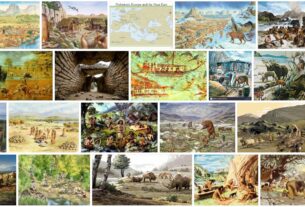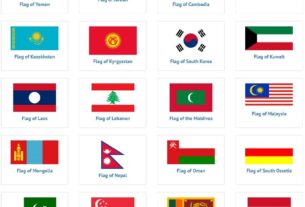Under the country’s constitution, state parliaments can legislate on a broader range of issues than the federal parliament, but federal laws take precedence over state laws. Therefore, many and the most diverse spheres of the country’s socio-economic life are regulated exclusively by federal laws (bankruptcy, immigration, marriage and divorce, etc.). Check diseaseslearning for political system of Australia.
The oldest political party is the Australian Labor Party (ALP). The Labor movement was founded in the 1890s, developed in parallel in several colonies, with the creation of a single state it becomes a federal party, since 1908 it has a single name ALP for all Labor organizations in the country, historically closely connected with the trade union movement. The Liberal Party of Australia (LPA), founded in 1944, is a conservative party of businessmen and the upper middle class. The Agrarian Party was founded in 1916, renamed the National Agrarian Party in 1975, and since 1982 the National Party. Traditionally focused on various sections of the urban and rural population of the country’s agrarian regions, since 1949 it has acted as a junior partner of the LPA. The Australian Democratic Party was founded in 1977 by its less conservative members who seceded from the LPA. A coalition government of the Liberal and National parties has been in power since 1996. After World War II, a two-party coalition formed the government also in 1949–72 and 1975–83. Labor was in power from 1941-49, 1972-75 and 1983-96. The Australian Democrats are represented only in the Senate. In addition, there are quite a few small parties – from the greens and the communists to the monarchists. The Australian Democrats are represented only in the Senate. In addition, there are quite a few small parties – from the greens and the communists to the monarchists. The Australian Democrats are represented only in the Senate. In addition, there are quite a few small parties – from the greens and the communists to the monarchists.
The Australian Chamber of Commerce and Industry is the most representative Australian employers’ organization among the country’s business associations. Through the chambers of commerce of the states and territories, it includes more than 350 thousand companies of various sizes and individual businessmen. Created in 1992 by the merger of the Australian Chamber of Commerce and the Confederation of Australian Industry. Represents the interests of the country’s business circles in interaction with the government and parliament, trade unions, the Australian society as a whole, as well as with foreign contractors. In addition, there are various industry and professional business associations. The most important body of the leaders of the largest corporations (with a total number of employees of more than 1 million people) is the Business Council of Australia, formed in 1983.
Australia is characterized by a fairly high civic activity of the population, there are numerous public organizations that are in favor or against something. For example, the Australian Republican Movement and Australians for a constitutional monarchy, Australians for a better society and Australians against further immigration, etc. The relevance of this or that issue for Australian society leads to the constant emergence of new and the dissolution of some existing civil movements. The largest trade union organization is the Australian Council of Trade Unions, which includes the majority of sectoral trade union organizations as collective members. However, in general, over the past two or three decades, the influence of the trade union movement in the country has declined.
In domestic policy, much attention is paid to the socio-political and socio-economic stability of the country, maintaining sustainable economic growth, developing a social security system on this basis, raising social standards, developing education and science, environmental problems, and above all, preserving the unique environment of the continent. The diverse national composition of immigration, especially since the 1970s, has put forward as an important task of domestic policy the development of harmonious relations between different cultures – the so-called. multicultural policy. In the 2nd floor. 1980s the Australian government initiated the process of “reconciliation” of Australian society with the aborigines, aimed at eliminating the acute problems of their coexistence with European civilization and injustices, admitted in relation to the natives in the past, to maintain their original culture. However, this process is very difficult.
Australia pursues an active foreign policy aimed at strengthening international security, acting, in particular, as an active supporter of the prohibition of such types of weapons as chemical and biological, Australia initiated a convention to ban infantry mines, etc. The country actively participates in the activities of the UN and its various specialized organizations. The Australian Armed Forces are quite often involved in peacekeeping operations, especially in the Asia-Pacific region (in East Timor, on the island of Bougainville, the Solomon Islands, etc.), where the main foreign policy and foreign economic interests of the country are concentrated. Australia, in cooperation with New Zealand, pays special attention to maintaining peace in Oceania, where numerous small and small states with rather acute domestic political and economic problems are located. The United States remains Australia’s main military and political ally. Australia is sometimes even called the “Deputy Sheriff” (Sheriff – naturally the United States) in the Southwest Pacific. However, its position on international issues is not always identical to the position of the United States and is determined primarily by national interests.
The armed forces are formed on a contract basis. They consist of three types – the Ground Forces, the Air Force and the Naval Forces. The development of the Armed Forces takes into account the geographical position of Australia, its limited (in peacetime) human resources relative to the territory it occupies. Therefore, the main emphasis is placed on the high technical equipment of the Armed Forces, mobility and the development of early warning systems. The total number of permanent personnel is 51.5 thousand people. (males fit for military service – St. 4.3 million), another 39 thousand are reservists, in the Air Force – 263 aircraft, in the Navy – 84 ships, spending an average of 155 days a year at sea. Aggregate military spending in 2001/02 amounted to AUD 21.54 billion. dollars (11.6 billion dollars at the average annual exchange rate of 2002, or almost 14 billion dollars.
Australia has diplomatic relations with the Russian Federation (established with the USSR in 1942).


